Am I the first one to say that omg January is over! How come! What happened! No? Obviously, it’s mid-February. Have you done anything to advance yourself in the direction of your dreams? I am not asking if you’ve actually achieved your dreams or even stood by your New Year resolutions — that’s too much to ask of anyone.
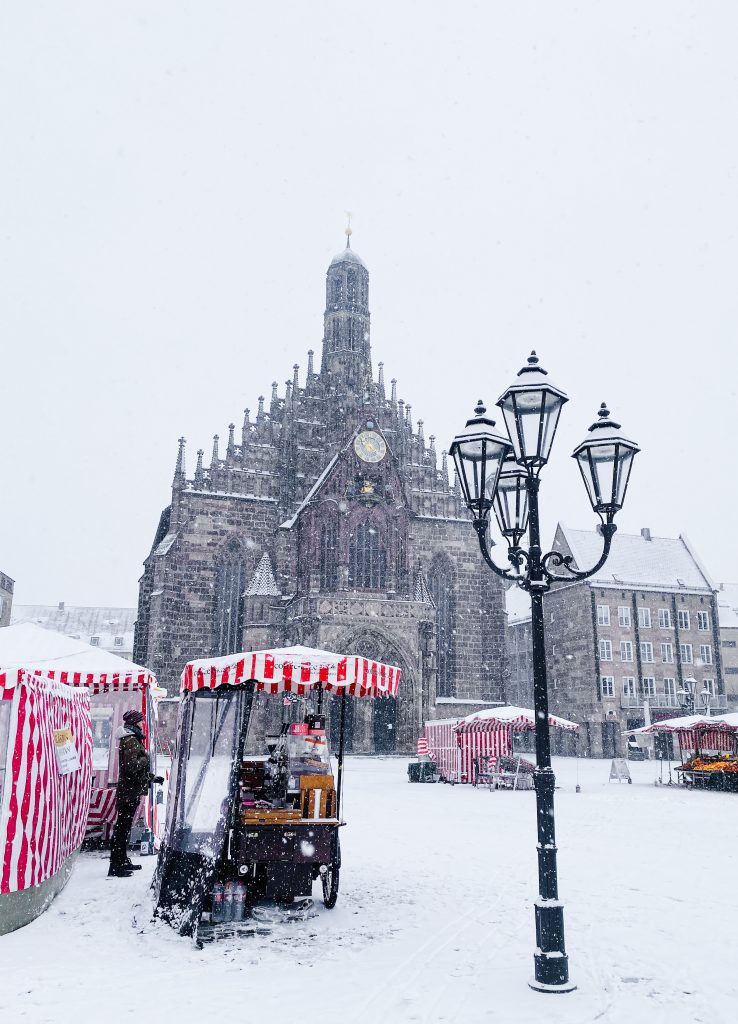
I found myself nowhere close to what I imagined, carefully searched for on Google, printed out and pasted on my wish list. Yes, I have one of those, make them every year. They also tend to come true at a certain point, not necessarily that year, but eventually. I missed 2020, and my friend said that that’s why 2020 was so horrible. I decided not to take any chances in 2021.
The wish list is pasted on the wall of my bedroom and I look at it frequently, but so far haven’t taken any action. I do keep cooking, though. And while cooking itself is not on the wishlist, I see it as a stepping stone to achieve quite a few of my goals.

Back in August I gave myself permission to develop and publish my own recipes, but it’s been a slow process. While consciously I tell my self that I am ready, subconsciously I block my own efforts. Right now, for example, I have two recipes that are developed, photographed and fully written that are saved as drafts in my blog, yet I can’t seem to press “publish”.
So while I am figuring out what’s wrong with me how to overcome my fears, I learn from the best. They say, in order to be a writer, one needs to read a lot. I guess then to become a recipe developer, one needs to cook through a lot of other people’s recipes.
They also say, that while learning to write and searching for your voice, you will inevitably sound like the writer you are admiring. And while my writing voice is somewhat established, or I’d like to believe that, my voice in the kitchen is yet to be defined. Which is why, I guess, I find myself adding za’atar and pomegranate molasses on top of anything and everything while cooking from Ottolenghi one month, then using tons of butter and cream after reading the newest book by Nigella Lawson the next. As long as I am learning, it’s progress.

In January, or to be more exact, in the end of December, I have decided to face my biggest fear — cooking big and expensive chunks of meat. I can roast a chicken all right, make a Bolognese sauce or kofta, but when it comes to things like beef shoulder, T-bone steak, or pork belly, I am too scared to destroy it and end up with wasted food and money, the former probably the bigger concern for me.
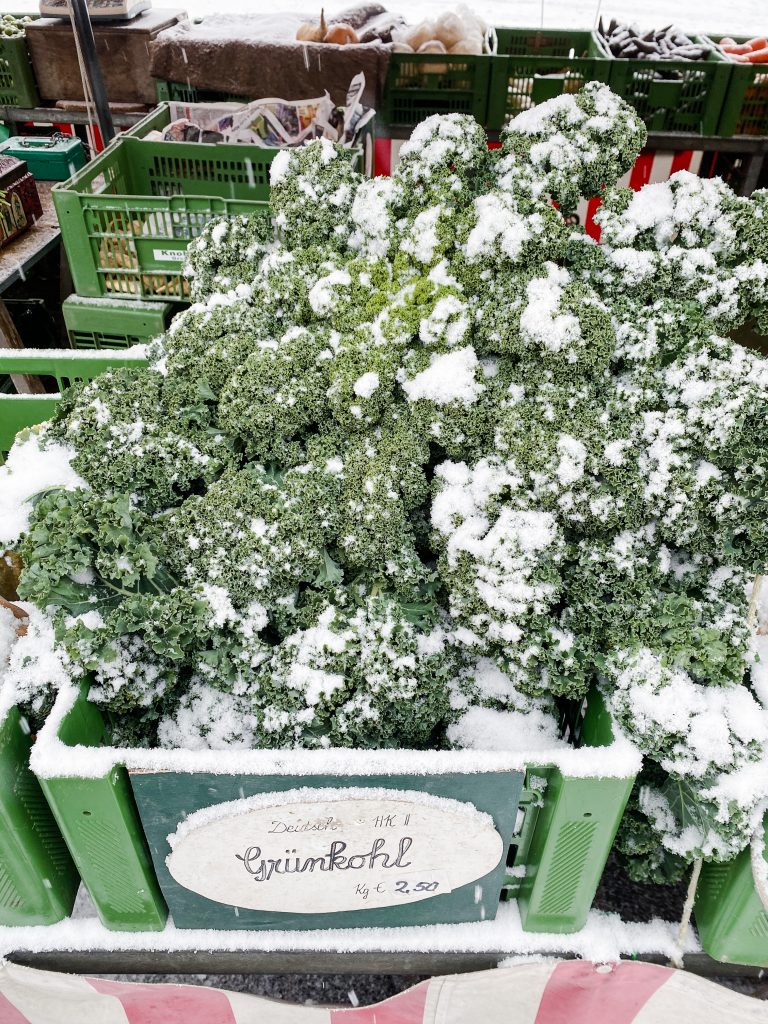
On the eve of Catholic Christmas, for the first time in my life, I tried my hand at venison. The story goes like this. I do not celebrate Catholic Christmas, but having succumbed to the holiday spirit, in December I baked a few dozen cookies and made a DIY Advent calendar, which, naturally, ends on the 24th. So it was a bit strange to count the days the whole of December by opening tiny presents and then nothing happens at the end. I thought I must at least cook something special. And I chose venison.
Venison is a popular type of meat in winter in Germany, as I learned from this post by Christie of A Sausage Has Two. I grabbed a shoulder at my farmer’s market and set out to make Ottolenghi’s venison stew with guacamole.
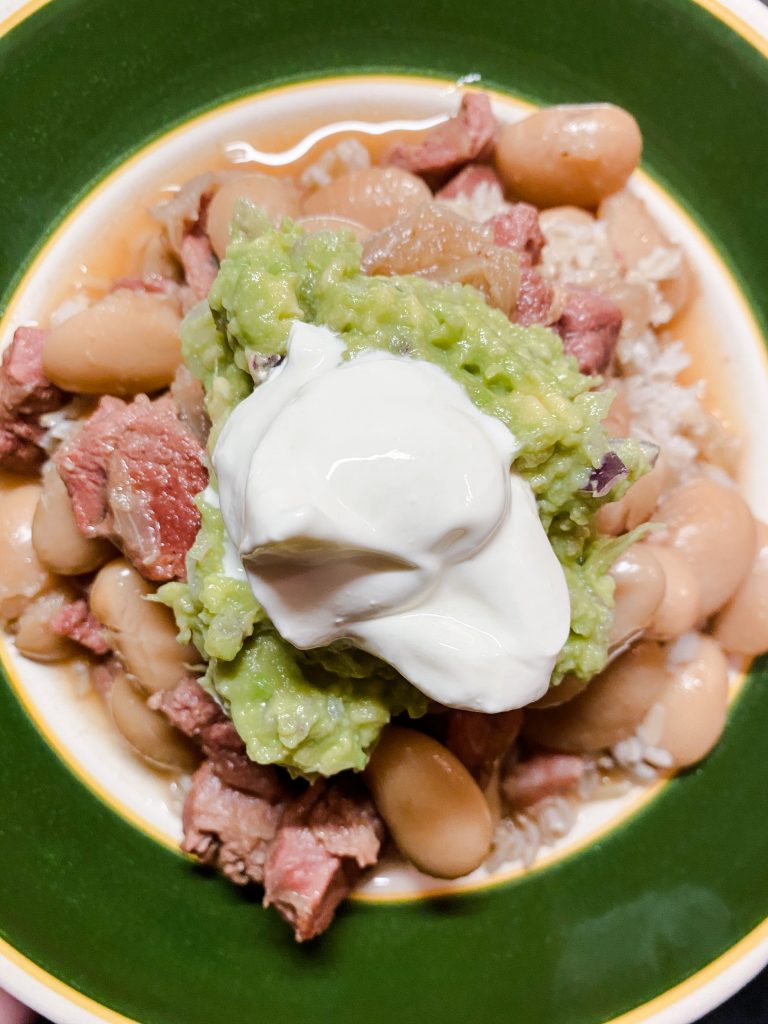
I am not sure, whether I got the wrong cut of meat or maybe, as a famous Russian saying goes, my hands grow from the wrong place. Some people, when using this saying, are a lot more specific, and suggest that one’s hands grow from his butt, but let’s not dive into details about where exactly my hands grow from, the point is I was not very successful at cutting the shoulder into chunks.
Wherever I tried to sink my knife in, there was a bone or connective tissue. So I struggled and tortured the poor piece of meat for about half an hour, all the while feeling like I am not giving it the respect it deserves.

The rest of the process was quite fast and smooth: I fried and stewed venison pieces, added beans and served the whole thing with guacamole and sour cream. To my surprise, the meat was incredibly tender and made for a great meal to celebrate the last day on the Advent calendar, for a lack of better reason.
Now, for New Year, which over the last century came to replace Christmas in Russia and took over all its attributes like decorating a tree, giving presents and having dinner with family, I had to step my game up. So I went with Darra Goldstein’s braised pork with kvas.
This recipe poses two difficulties: finding kvas, fermented drink made of rye bread, and figuring out how pork butt is called in German. Kvas was quickly located at a nearby Russian store. Pork butt deserves its own story.
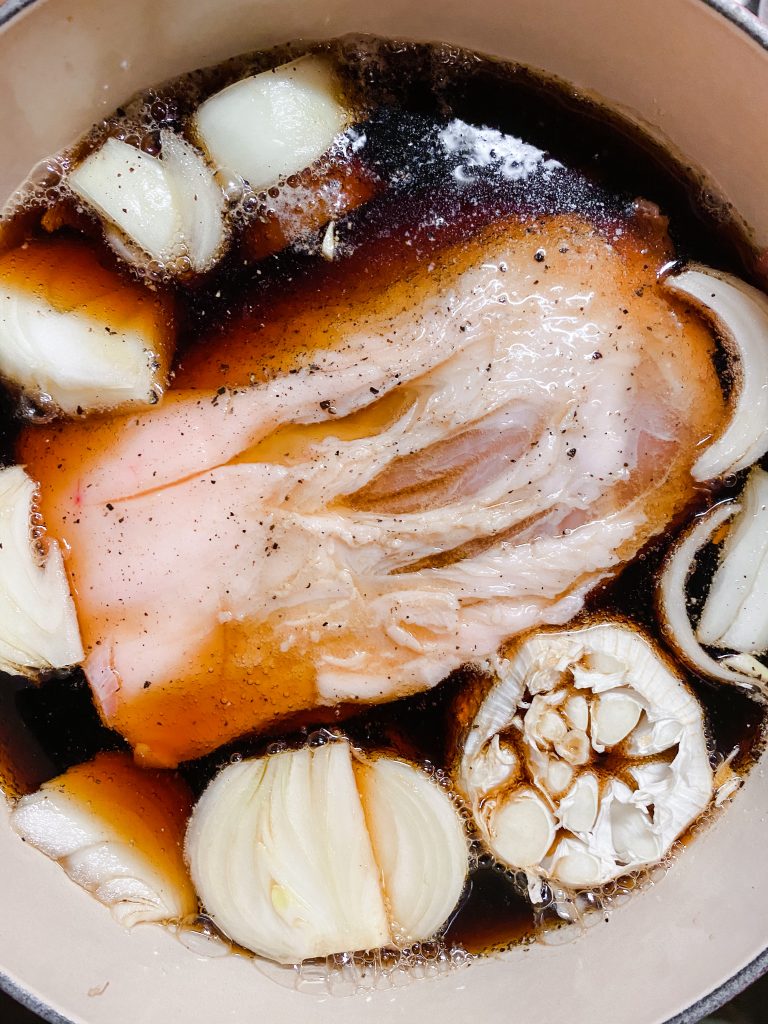
First of all, why would one call a cut of meat that is nowhere neat the butt a “butt”? All the other words were taken? I googled “what is pork butt?” and it turned out that pork butt is really a part of pork shoulder. Now you tell me a pig has shoulders? I could live with that, but the confusion doesn’t end there.
You might wonder, if one part of pork shoulder is called “pork butt”, than what is the other part called then? Are you ready? “Pork shoulder”. A pork shoulder is made up of “pork butt” and “pork shoulder”. It’s like saying that a cat consists of head, tail, paws, and a cat.
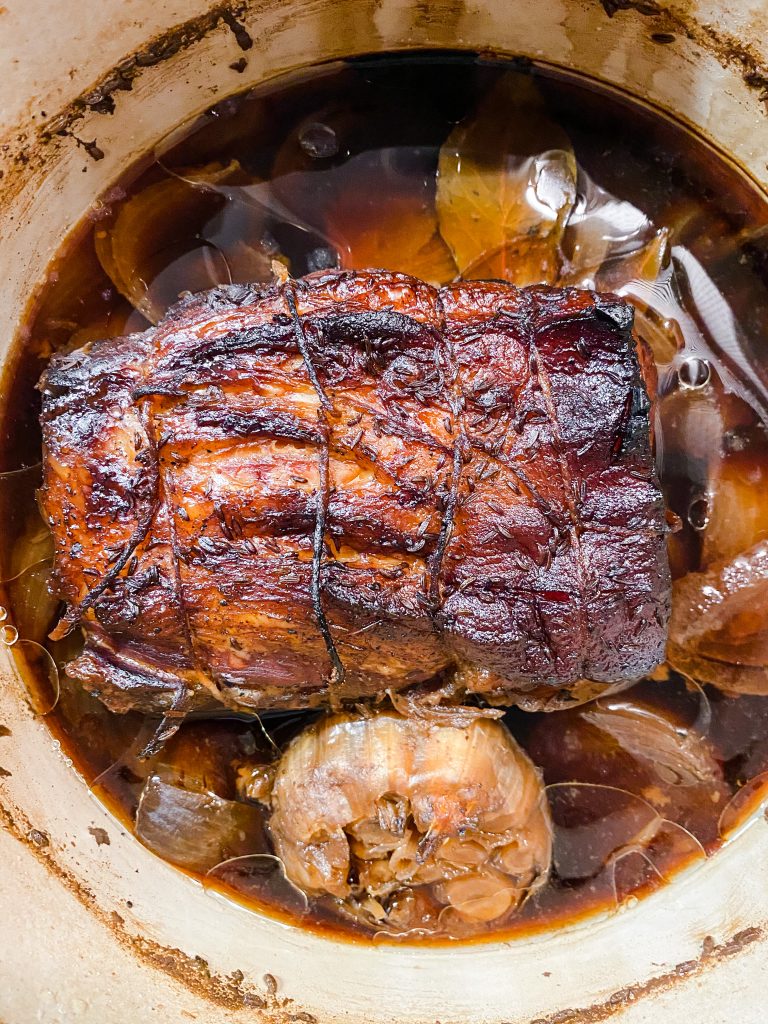
Now all I had to do was figure out which cut of pork correlates to “pork butt” in German. Given that I decided to cook it on the morning of the 31st of December and went grocery shopping one hour before supermarkets closed with my one-year-old son in tow, it was not an easy task. I ended up getting Schweineshulter, literally translated as “pork shoulder”.
Days later, when I had the time to sit down and figure things out in peace, it turned out I got the wrong cut. Schweineshulter is actually the pork shoulder part of the pork shoulder. “Pork butt” in German, believe it or not, is Schweinenacken, pork neck. How is a girl to know that pork butt and pork neck are the exact same thing that is a part of pork shoulder?
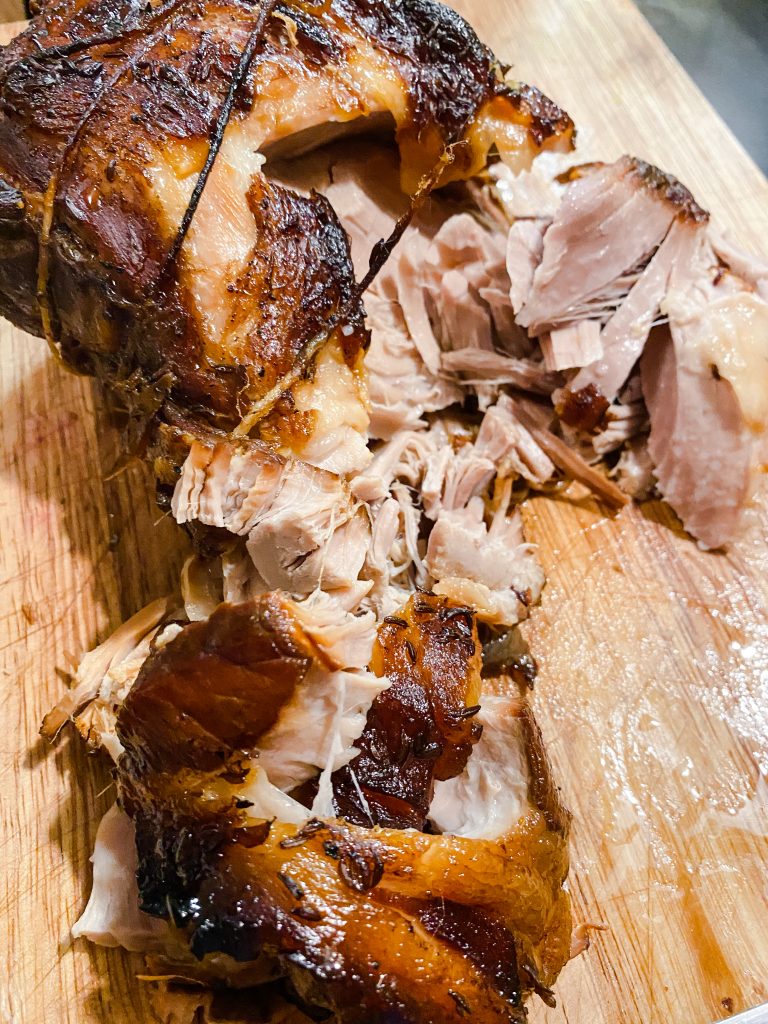
Pork shoulder worked well nevertheless. I tied it with a string — something I’ve never done before, marinated it in kvas, and baked for four full hours. When I took the meat out of the pot in order to slice it, the whole thing just fell apart. I can’t complain, though, it was a perfectly festive delicious meal to celebrate New Year in style.
Continuing with the Russian theme, I moved on to Darra Goldstein’s beef stew with horseradish, which called for beef chuck and another round of matching American cuts to German ones. What’s called “chuck” in the USA is two different cuts in Germany: Rostbraten and Schulter. I went with the latter.
The recipe features a full cup of freshly grated horseradish, which, surprisingly even to me, is something I never cooked with. As a Russian, I had it on more than one occasion, but never used a fresh root in my kitchen. One cup, I thought, sounds kinda a lot, given that I had to run to the open window a few times while peeling and grating it. Not even the most evil of onions made my eyes burn so.
But I promised to be brave in the kitchen, so I trusted the recipe and dumped the whole cup in the stew. Funny enough, my word for this year (you know this new trend of coming up with one word that will guide you through the year, right?) is “intuition”. Boy, should I have listened to it. The stew was so deeply flavorful, rich, and complex, which was all the more frustrating as tears ran down my face with every spoonful. Even my husband, who not only loves spicy food, but is used to it, said that the stew was a tad too horseradish-y.
In an unexpected turn of events, though, after I put the leftovers to the fridge overnight, the fire of the horseradish mellowed, letting other flavors shine through. I served it over buckwheat the next day. Horseradish and buckwheat — this must be the most Russian of all Russian meals.
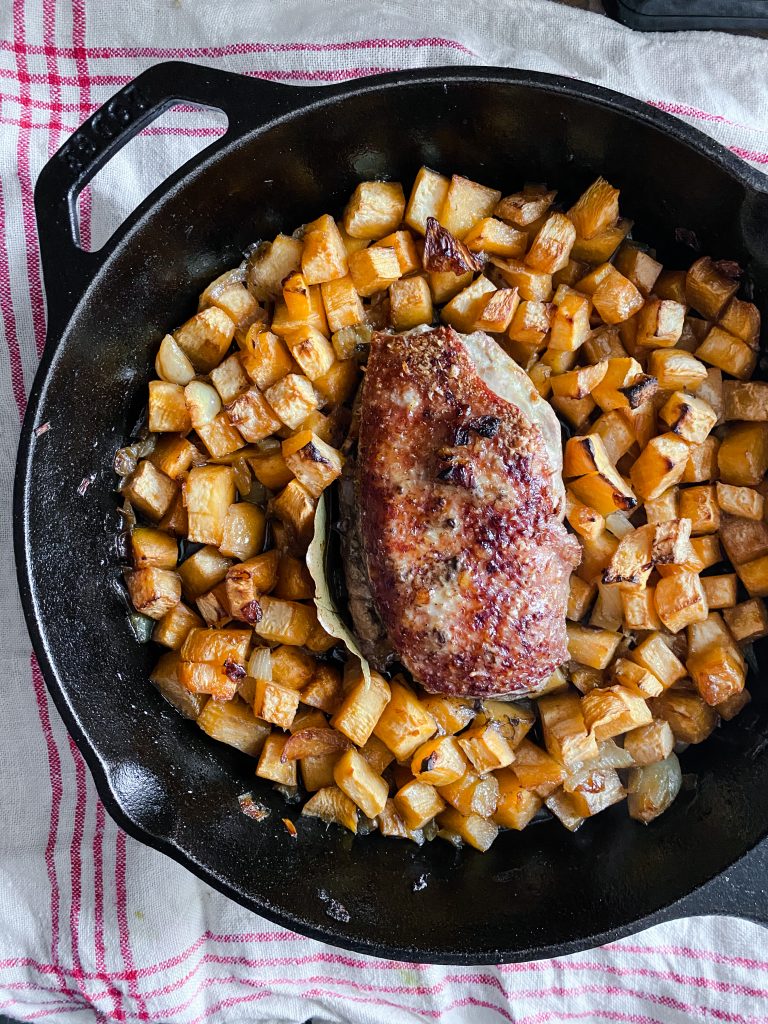
The last exciting update on my meat exploration is braised duck with turnips, another recipe from Beyond the North Wind. The recipe calls for a whole duck, which would be an amazing endeavor to undertake, but all I had was one breast which cost me twenty euro. I have to say upfront, this was twenty euro wasted. I overcooked the breast and it turned out dry. Edible, but not great. Not sure when I’ll be ready to splurge again and try to redeem myself.
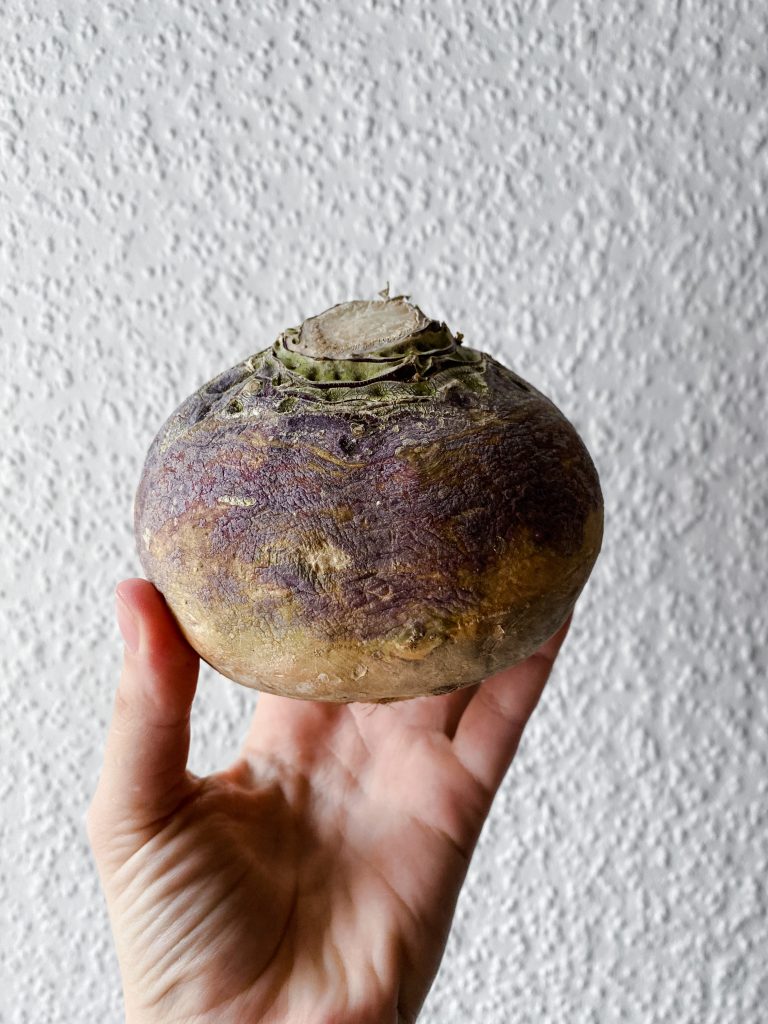
In positive news, the duck is braised on a pillow of turnip, and turnip — as embarrassingly for a Russian to admit as was the case with horseradish — is something I’ve never cooked with. With the help of my German teacher, I figured that turnip in German is Steckrübe, so Steckrübe I got at the supermarket.
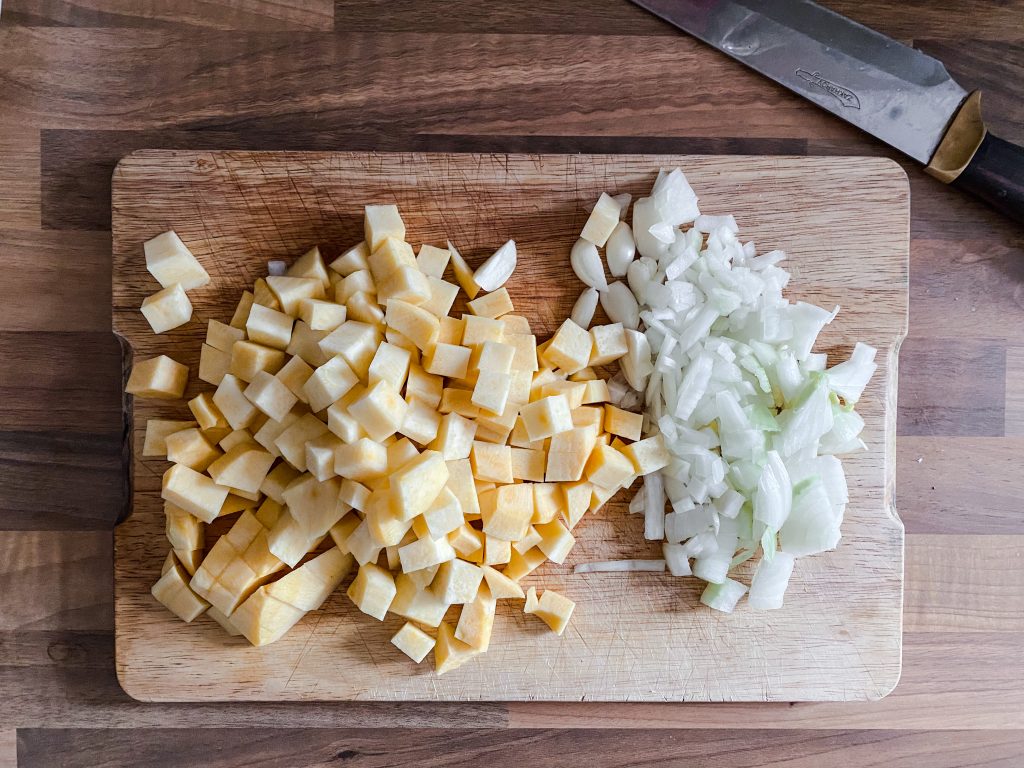
I wasn’t even surprised, given my history with translating ingredient names, when it turned out that Steckrübe is not quite turnip, but rutabaga, also known as swede, Swedish turnip, neeps, or bryukva in Russian. Apparently, that’s a hybrid between a cabbage and a turnip — how wild is that?
The turnip-cabbage thing was the best part of my braised duck with turnips and got me absolutely excited to keep experimenting with rutabaga in the months to come.
The third new ingredient of the month was topinambur (Jerusalem artichoke), which looks like ginger, tastes like potato, but is actually a sunflower. Nature doesn’t cease to amaze me. I assumed that topinambur is a root, but it is a tuber, an enlarged part of some plants that serves as storage for nutrients and asexual reproduction. Is your mind blown yet? Mine is somewhere far far away, blown all the way to my home in Russia, where, apparently, my parents grew it in their garden, but never introduced me to this crazy beast.
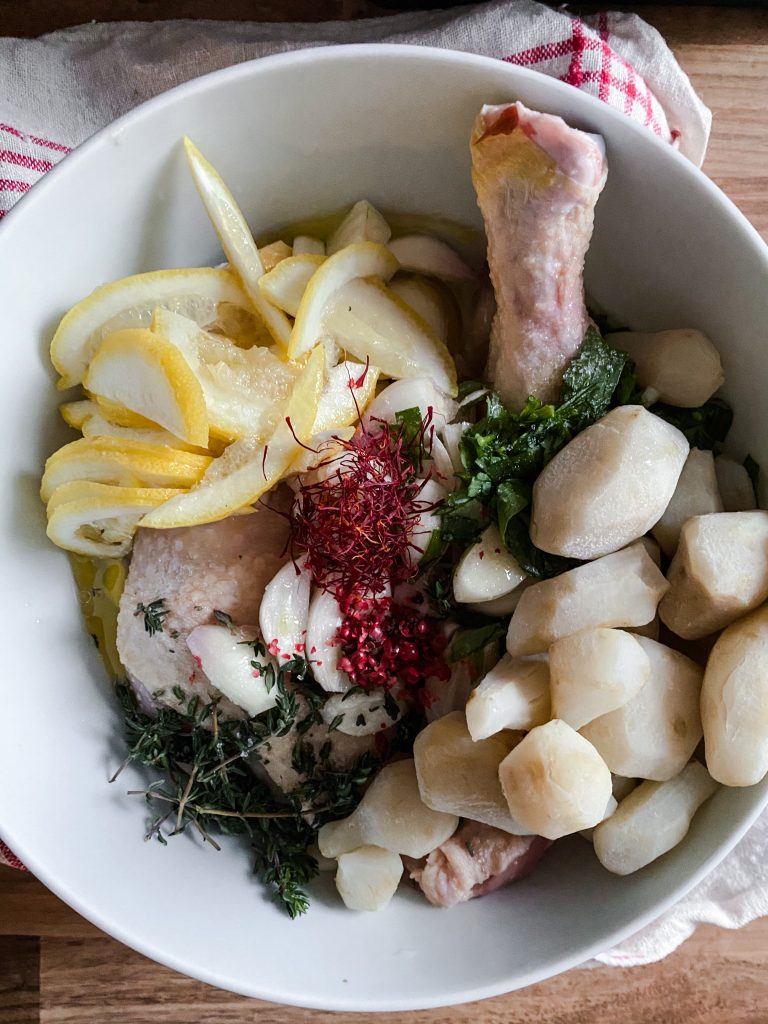
I found a roast chicken with lemon and topinambur recipe in Ottolenghi’s Jerusalem, and was all the more excited to make it as it featured three more ingredients I’ve never tried: saffron threads, pink peppercorns, and tarragon leaves, saffron being the most exciting of all, what with its status of the most expensive spice in the world.
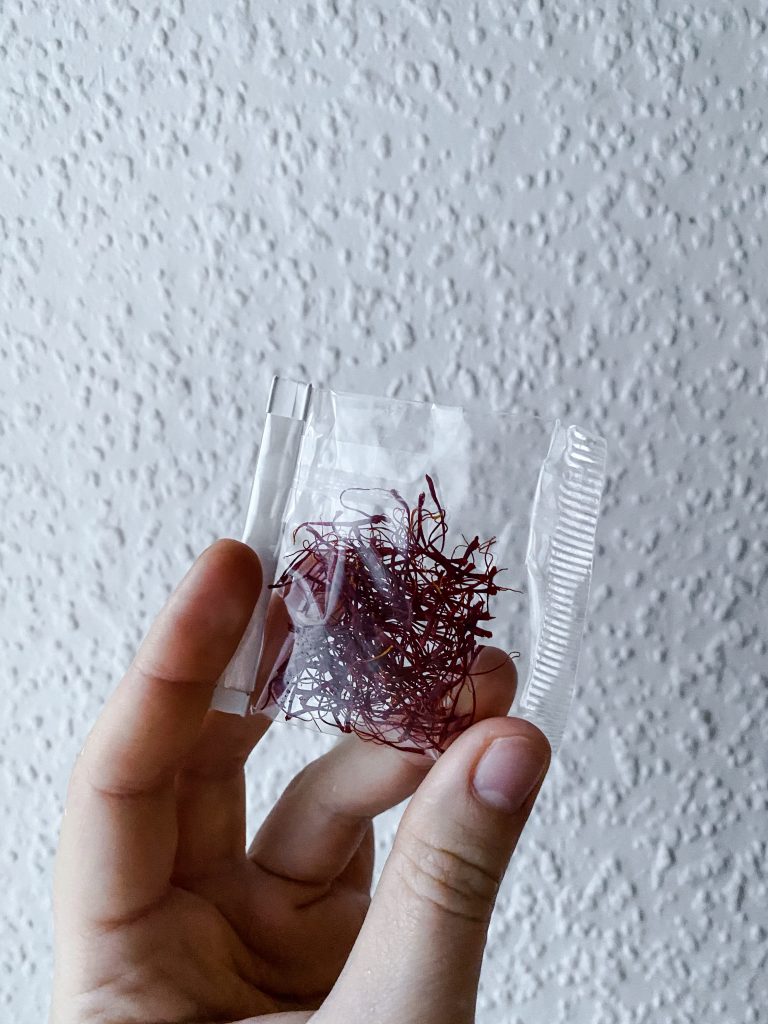
The recipe calls for a teaspoon of saffron which, in my mind, is a confusing measurement, as it’s the lightest threads you are measuring and it’s not clear whether you must pack them in or heap them or flatten the top of the heap. Basically, you could put a dozen threads more or a dozen less and it would still constitute a teaspoon.
A much better way is to count the threads which I know now that I put a whole gram of saffron into the dish and only afterwards read that a rule of thumb is to use three threads of saffron per person. So my dish required approximately 12 threads and 1 gram contains — wait for it — 463.
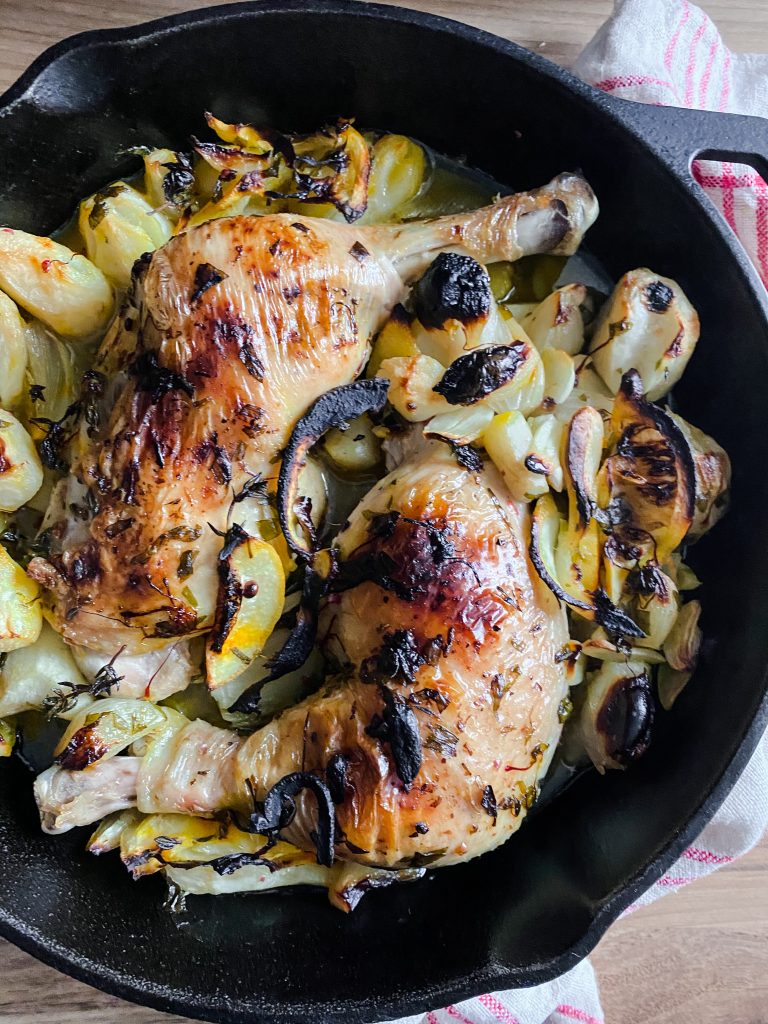
Even the most expensive spice in the world is not that enjoyable when you use 38 times more of it than needed.
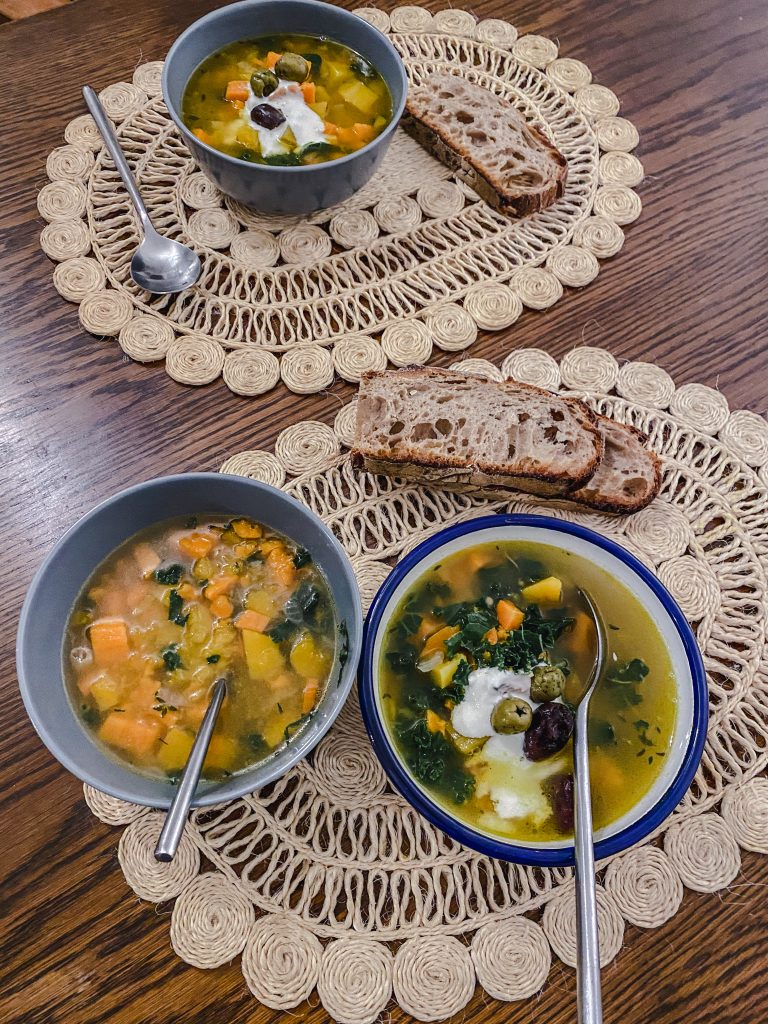
Anna Jones’s easy winter vegetable soup 
The rest of my seasonal cooking in January was a lot more familiar and, therefore, destined to succeed. I used lots of butternut squash. First, for this simple soup with butternut squash and sweet potato by Anna Jones.

Squash and rice soup 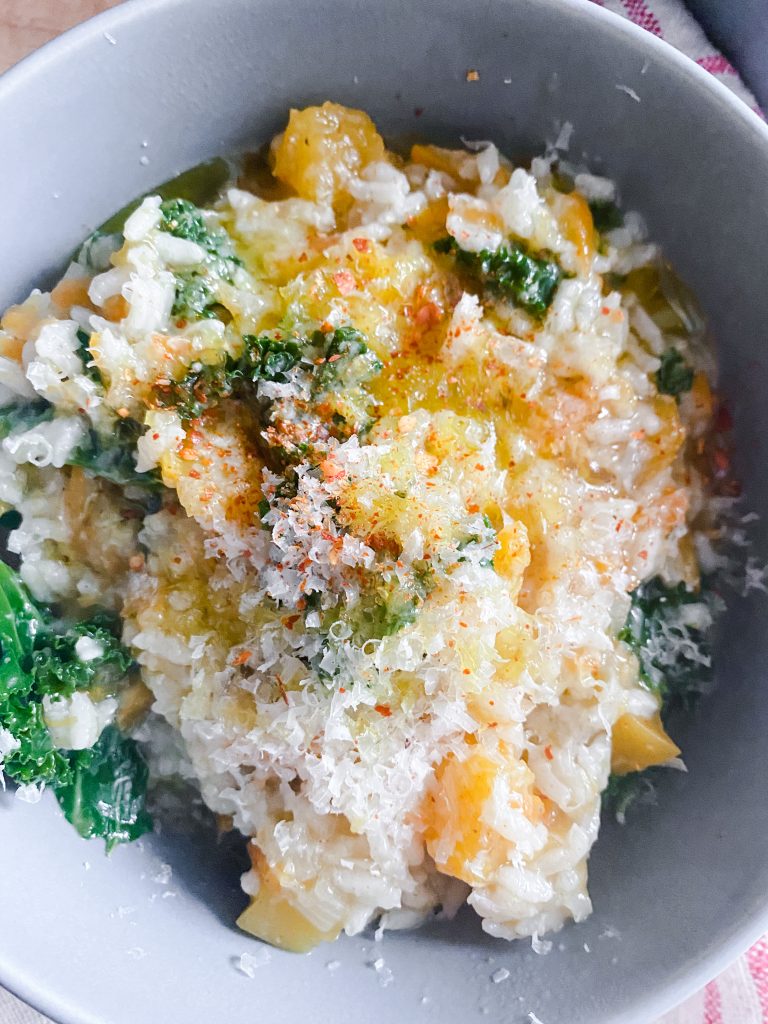
Then, for this squash and rice soup by Rachel Roddy, adapted by Luisa Weiss. I also added kale, simply because I got way too much at the market, so we had to have it for breakfast, lunch and dinner.
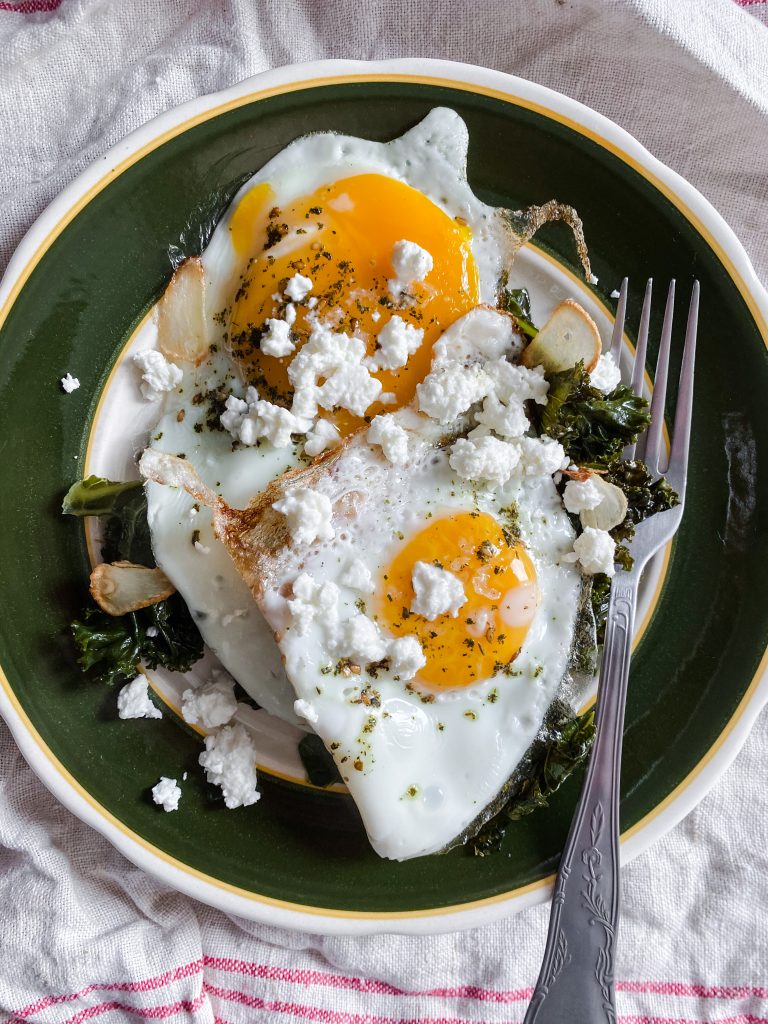
Here’s proof: fried eggs with kale, garlic and feta I made for breakfast. To make it, heat up olive oil in a pan (I used my Le Creuset as it’s good for both frying and steaming). Once the oil is hot, add sliced garlic (as much as your heart desires) and brown it slightly. Take the garlic out and rip kale with your hands into the same pan, add a splash of water and a pinch of salt, cover with a lid and let kale steam for a few minutes. Turn it around a few times, so it doesn’t stick to the bottom.
Meanwhile fry eggs in a separate pan. Assemble: place kale on a plate, sprinkle fried garlic slices over, top with a fried egg and crumble feta over the whole thing. This meal was inspired by Diana Henry’s breakfast greens with eggs, feta and chili, but as Telegraph has a pay wall, I simply did my best to recreate the head photo for the recipe.
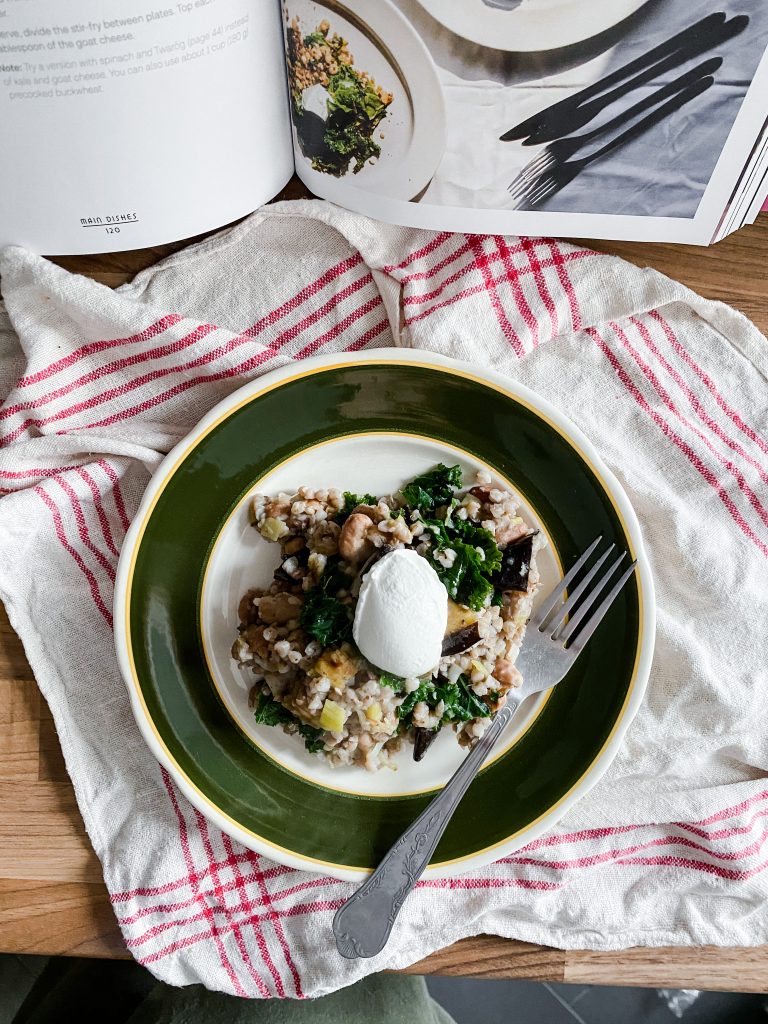
There was also this buckwheat stir-fry with baked eggplant and more kale, inspired by a recipe from Michal Korkosz’s book Fresh from Poland. To repeat this, start by frying onion and garlic, then build up by adding vegetables and beans of your choice: pumpkin, peppers, zucchini, and kale are great.
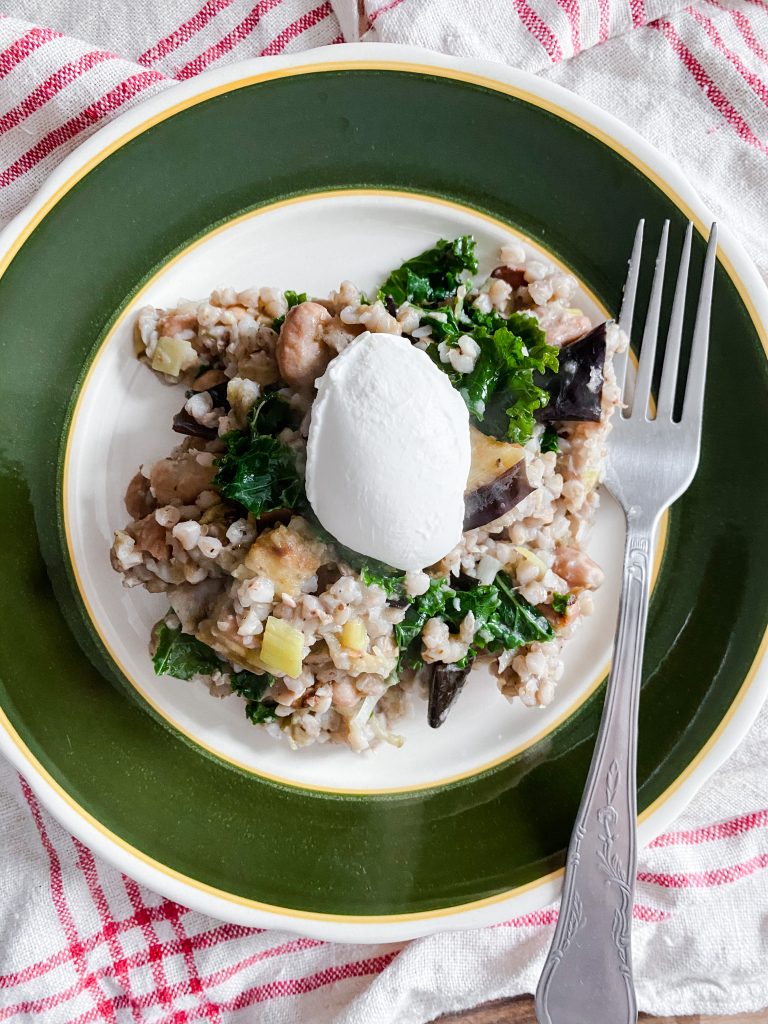
I like to make this stir-fry when I have some baked vegetable leftovers and cooked beans from the day before, then the process is incredibly fast. When the vegetables are done (or hot, if you are reheating them), mix in cooked buckwheat and a good amount of butter, serve with goat cheese on top.
Finally, in January I fully embraced parsnip. In September, when I tried it for the very first time, I wrote this:
“Parsnip probably won’t become a regular in my kitchen, but will make an occasional appearance in supporting roles.”
The joke’s on me! This month I made a parsnip dip, a parsnip soup and a parsnip cake.
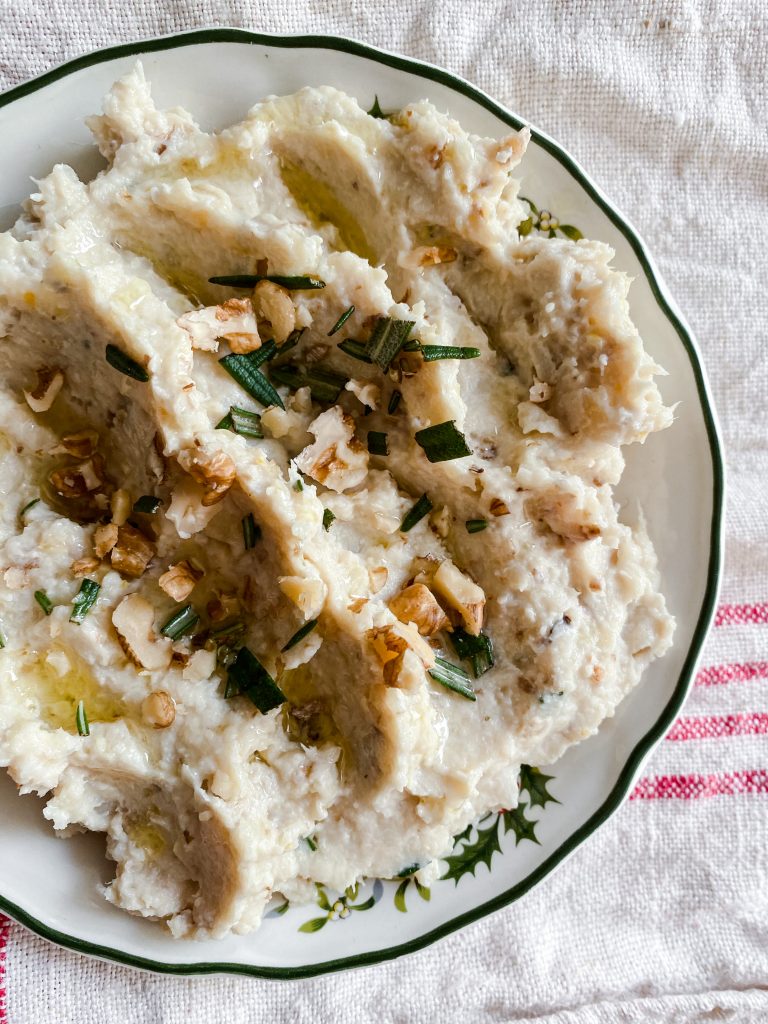
The parsnip-walnut dip was, once again, from Korkosz’s Fresh from Poland. You can find the recipe online here. It’s in Polish, but Google Translate will help you figure it out.

Parsnip date and hazelnut cake was from Joshua McFadden’s book Six Seasons. I saw it in the winter section of the book and went: “Whaaaaaaaat!?”

You could, of course, argue that there’s carrot cake, so why not parsnip? But it totally blew my mind and then even more so when I tried it. The most unusual cake, so moist, fragrant, sweet and with intense lemony and peppery glaze on top.
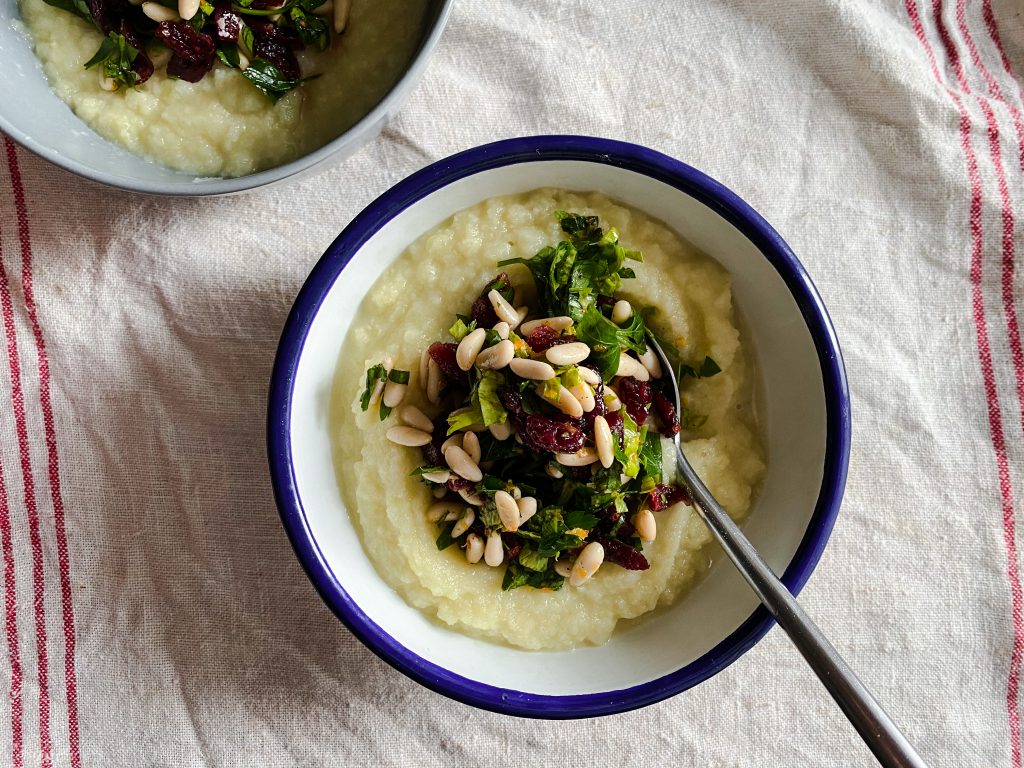
Parsnip soup with pine nut and currant relish 
Parsnip soup with pine nut and currant relish was almost as surprising and revelatory as the parsnip cake. Here’s an adapted recipe I found online, but I highly recommend you get the book, especially if you are into seasonal cooking. And you must be, if you are reading this.
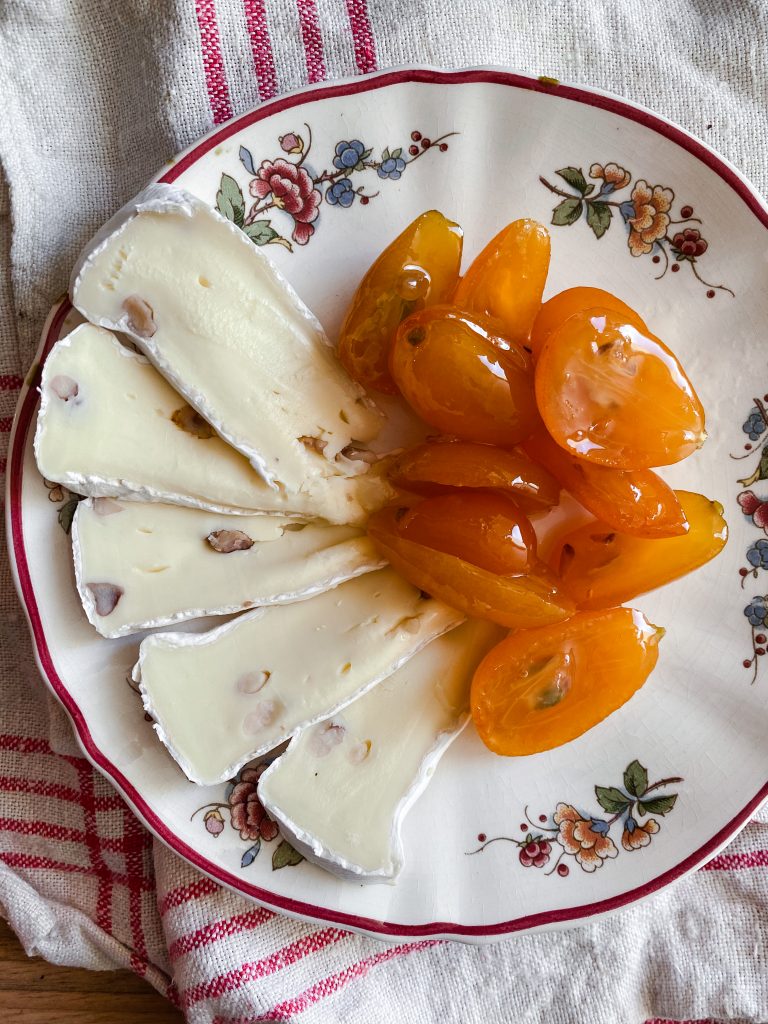
Lastly, I couldn’t not mention this kumquat marmalade from Zoë Bakes blog. She serves it with scones. I didn’t quite have it in me to make scones, but the marmalade requires almost no work on your part, which is rare when it comes to citrus. My orange marmalade is proof.
It’s 9 pm on the 13th of February, so I think I am going to stop write here and publish this until half of February is gone. I wonder whether I am going to meet my personally-set deadline (the third of each month) during this year of writing about seasonal eating. It’s been nine months and it didn’t happen yet. But who knew I’d have so much to say about seasonal cooking in January, the middle of winter when all one has access to is root vegetables? Not me. Ok, signing out, ciao for now!







